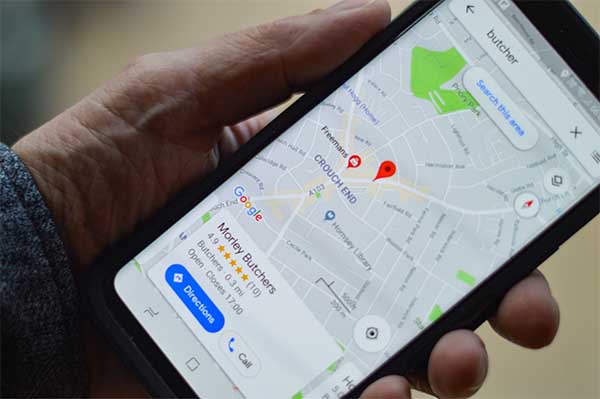Those blue-ringed speakers where Alexa or Echo lives once seemed like novelty items. However, by 2022, smart speakers will be in 55 percent of U.S. households, according to Edufficient.com.
A voice search means using your voice to interact with a search engine rather than through text. Over a third of the US population uses voice search, says EMarketer. Soon enough, running voice searches will be as routine and instinctual as brushing your teeth.
That means you need to prime your website so your target audience can find it when they decide to talk to Alexa or Siri. This article will walk you through how to optimize for voice search.
Voice searches vs. manual searches
Voice search optimization and manual search optimization aren’t completely different animals. However, there are some key distinctions with voice search that are worth paying attention to:
- Voice search page results load 52 percent faster than the average page (Backlinko).
- Manual searches generate a list of links. You might find the answer you’re looking for in the fifth link down the page. Voice searches only return one answer to searchers—the best-optimized result.
- With voice search results, title tag optimization isn’t as important as it would be in regular desktop searches. That means it’s not as important to make your content’s title tag match the search query text. Basically, you don’t need to create a piece of content for every single keyword. Since so many people use voice searches, it would be impossible for Google to find a page for every search query. Instead, Google explores the entire page to find the best match for that particular voice search.
How do you optimize for voice search?
1. Brainstorm the questions people are asking their Google Assistants, Sonos Ones, and other virtual assistants.
People use voice search to ask questions, and you must create and optimize content to deliver relevant answers.
When you run a voice search, you usually access the first result that comes up, rather than scrolling down the page and sifting through content as you might with manual searches. Therefore, you need to be focused on finding the questions people are asking and answering them.
How do you find these questions? If you have a virtual assistant, try asking it questions and seeing what answers it gives. If you have a paid tool like SEMrush or Ahrefs, you can look at your organic keywords to filter for questions like the 5ws, how, etc. Looking up competitor keywords can give you ideas as well.
A couple of free methods are using AnswerthePublic.com, a search listening tool, and Google Autocomplete. Google Autocomplete runs off of data from actual searches and can be a source of inspiration.
With Answer the Public, you type in your subject and it will generate a search cloud of questions people are asking. The tool groups the questions with words like the 5 Ws. Other category words include ‘how,’ ‘which,’ and ‘will.’ The questions have green dots, and the darker they are, the more people are asking that specific question.
2. Focus on long-tail keywords in your content. Voice search queries are longer than manual searches due to their conversational style. Google is fond of long-form content—the average voice search result on the first page of Google has over 2,312 words. Quality long-form content with more words has more of an opportunity to match search results.
Content creators can develop long-form content that includes long-tail keywords that appear in vocal queries. One example is: “How can I optimize my site for voice search?” SEO experts recommend that marketers focus on long-tail keywords with filler words to give their content a leg-up in search engine rankings.
3. Answer the question and keep your answer short and sweet. It means making sure you directly answer the search query within the content and keep it concise. As discussed before, you don’t have to mention it in the title or introduction.
The content should be simple and easy to read. The average voice search result is written at a 9th-grade level. Google also recommends that voice search answers also have proper pronunciation and prosody.
How should you format your answer? Ask Google your question and listen to the answer. If the answer is a short paragraph, go with that answer form. If it’s a list with bullet points, choose that option.
4. Make sure your page loads fast. The average voice search result page loads in 4.6 seconds, as opposed to an 8.8 second load time for the average page to load completely.
Imagine if users run a voice search query, find your website, and hear a long silence as your web pages load. It frustrates users and makes them more likely to abandon your web page.
SEMrush has a few extra tips for improving page load speeds:
- Use compressed images and videos on your site.
- Use “async” and “defer” to reduce JavaScript parsing.
- Use CSS3 and HTML5 frameworks because they load mobile web pages quickly.
5. Get a Google My Business profile—it’s free. Nearly 60 percent of people use voice search to find information about a local business. Setting up a Google my Business profile improves your local SEO and lets Google know that your business is located at a particular place. When a searcher asks Google to show similar businesses in a certain area, your business could rank for that query.
Visit Google My Business to set up your free profile. You must include your business’s name and address [note: as of April 2021 phone numbers aren’t allowed in GMB listings]. Other important elements are business hours and relevant photos. Be sure to continually update your information to give searchers the answers they’re looking for.
Conclusion
Over the past several years, marketers have said, “Pay attention to mobile.” Now voice search needs to be as big of a priority. Voice searchers often focus on one result—the first result your virtual assistant digs up. Implement the strategies in this article to make sure your business is that result.








